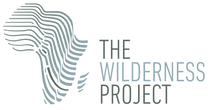
HOW WE WORK
Our proven strategy is to explore, understand, share and empower. First and foremost, we are field scientists. We go to the dangerous and inhospitable places no one else does.
In order to understand an ecosystem, we need to explore it in its entirety. From the beginning of a system to its end, we collect data pertaining to biodiversity, human populations and hydrology. We aim to understand what plants, animals and people depend on a river, and how they do so.
These extraordinary expeditions provide an incredible canvas for writers, photographers, artists and filmmakers. The storytelling outputs - everything from full length documentaries to award-winning podcasts - are crucial. Stories help us emotionally engage and drive a wide array of stakeholders from policy makers to global audiences to make positive change.
Traditional knowledge is the key to protecting wild places - our conservation work would be impossible without the support of Indigenous Peoples and local communities. They are our local experts, with cultural beliefs and traditions moulded by the rivers they depend on. The Wayei people for instance have taught us everything we know about the “Mother Okavango”. The scientific methods were simply a way of documenting what they already knew.
Our expeditionary research is about following the entire course of a river from its remote water towers to its end. The essence of this work connects all the communities who safeguard and rely on these rivers along their course. Combining baseline research with traditional knowledge ultimately provides a platform to aid our local partners in addressing challenges and seizing conservation opportunities along the river.
RESEARCH METHODOLOGY
The aim of our assessments is to identify areas of disrupted conservation status and understand and prioritise major threats. This process helps us direct and initiate conservation and environmental investment initiatives.

WATER QUALITY
We assess water quality across the full system, tracking key quality metrics and identifying any adverse contaminants such as effluent run-off. The power of water quality baselines is enhanced through longitudinal assessment and utilising comparative reviews within and between river systems.

WATER FLOW & HYDROLOGY
Whilst difficult to accurately monitor, water flow is critical to our understanding and efforts.
By collecting discharge measurements of the mainstream river as well as significant tributaries, we are able to calculate and/or validate water budgets, especially in transboundary cases.

BIODIVERSITY
Species richness, abundance and distribution are established. This work is fundamental to establishing meaningful baselines as well as identifying unique and critical species. With over 130 new species to science already discovered, we are constantly learning more about the true value of these remote wildernesses.
_JPG.jpg)
HUMAN IMPACT
We assess agricultural, industrial and infrastructure developments, densities and changes along the river systems and the impact these have across several indices. Understanding the evolution of human interaction with the river systems is critical to being able to work with communities to help protect them and the water.
COMMUNITY PROGRAMMES
Our two longest-running projects are focused on creating community-based systems of protection.

CAPE PARROT PROJECT
Since its inception The Wilderness Project has partnered with the Cape Parrot Project (CPP) as its largest donor. The Cape Parrot Project has been working for the past 15 years to keep the Critically Endangered Cape Parrot - South Africa’s only endemic parrot - safe in the wild by securing critical habitats for the benefit of wildlife, ecosystems and people in perpetuity. Key to this mission has been working with communities to secure this bird as a flagship for the conservation of Afromontane indigenous forests and related species.

NATIONAL GEOGRAPHIC OKAVANGO WILDERNESS PROJECT
Since 2015, the National Geographic Okavango Wilderness Project (NGOWP), a partnership between the Wild Bird Trust and the National Geographic Society, has been working with local communities, NGOs and the governments of Angola, Namibia and Botswana to secure permanent, sustainable protection for the Cubango-Okavango Hydrographic Basin. The project works closely with local communities to develop community-based systems of protection. In Botswana, the initiatives focus on access to knowledge and basic support for the development of sustainable livelihoods for the villages of the Eastern Panhandle in Ngamiland. While in Angola, the community development work is centred around the villages of Tempué in the South Eastern highlands of Moxico Province. We are actively working with local community participatory mappers, farmers, beekeepers and artisans to identify and enable sustainable livelihood opportunities that will allow the communities to manage and protect their natural resources while accessing additional sources of income.
Home by Victoria Wanjohi
EMERGING FILMMAKERS SHOWCASE
Together with Tanzanian organisation AFRISOS we are supporting and investing in young African filmmakers to tell stories of nature and the communities who live alongside wild rivers. Watch some of the films that emerged from our inaugural workshop in Botswana.



